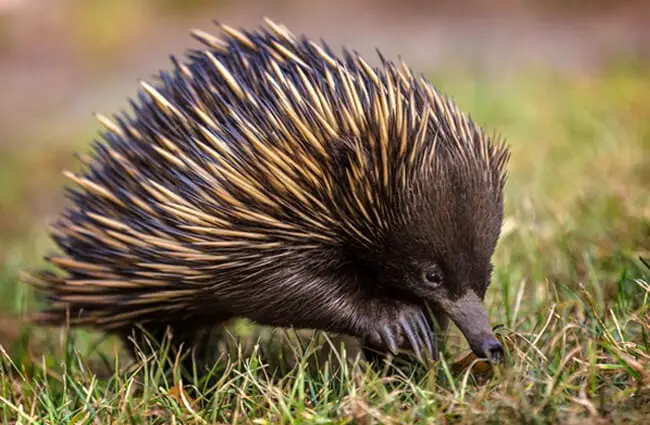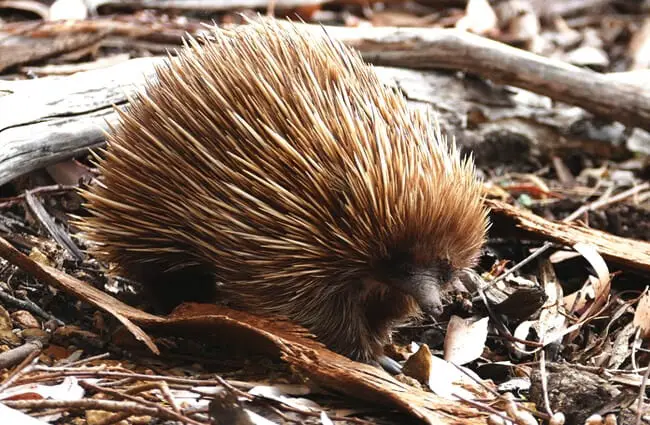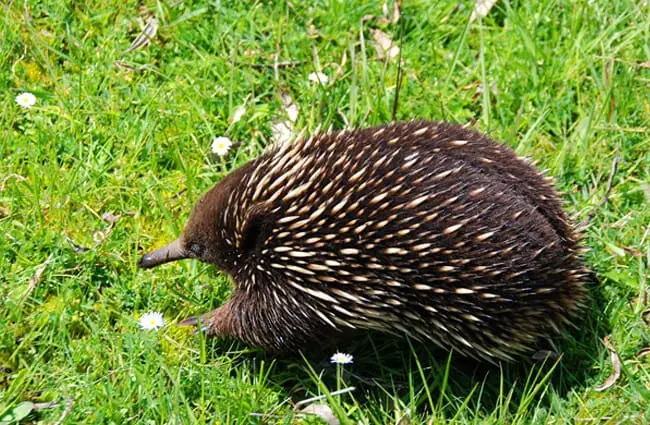Deep within the ancient landscapes of Australia and New Guinea lives a creature unlike almost any other on Earth. With its distinctive spiky coat, long snout, and peculiar waddle, the echidna often sparks curiosity and wonder. These fascinating animals, sometimes called spiny anteaters, are not only unique in appearance but also hold a special place in the tapestry of life, representing an ancient lineage that continues to thrive against all odds. Join us on a journey to uncover the secrets of the echidna, from its evolutionary past to its vital role in ecosystems and its intriguing interactions with the human world.

The Spiky Enigma: An Introduction to Echidnas
Echidnas are truly extraordinary mammals, belonging to a group known as monotremes. This classification sets them apart from all other mammals because, unlike marsupials and placentals, monotremes lay eggs. There are only two types of monotremes alive today: the platypus and the echidna. This ancient lineage provides a living link to the earliest forms of mammalian life, offering scientists invaluable insights into evolution.
Meet the Monotremes: A Unique Lineage
The evolutionary history of echidnas stretches back millions of years, making them genuine living fossils. Their ancestors diverged from other mammals long before the rise of marsupials and placental mammals. This ancient separation is why they retain primitive characteristics such as egg-laying, a cloaca (a single opening for excretion and reproduction), and a lower body temperature compared to most other mammals. There are four recognized species of echidnas: the Short-beaked Echidna (Tachyglossus aculeatus), which is the most widespread, and three species of Long-beaked Echidnas (Zaglossus spp.), all native to New Guinea, which are generally larger and more elusive.
A World of Spines: Physical Characteristics
An echidna’s most striking feature is its coat of sharp, keratinous spines, which are modified hairs. These spines provide excellent protection against predators. Beneath the spines, a layer of coarse fur helps insulate the animal. Echidnas possess a long, slender snout, which is highly sensitive and used for foraging. This snout houses a tiny mouth and a remarkable, sticky tongue that can extend up to 18 centimeters, perfect for snatching up insects. Their powerful, shovel-like claws are perfectly adapted for digging, whether to unearth food, create burrows, or escape danger. Despite their small eyes, echidnas have an excellent sense of smell and hearing, compensating for their limited vision. They typically weigh between 2 to 7 kilograms and can live for an impressive 40 to 50 years in captivity, though their lifespan in the wild is often shorter.
Where the Echidnas Roam: Habitat and Distribution
Echidnas are remarkably adaptable creatures, found across a wide range of habitats throughout Australia, Tasmania, and New Guinea. The Short-beaked Echidna, in particular, is the most widespread native mammal in Australia, inhabiting everything from arid deserts and scrublands to forests, woodlands, and even suburban gardens. Long-beaked Echidnas, on the other hand, are primarily found in the montane forests and alpine grasslands of New Guinea.

Finding Echidnas in the Wild
For the aspiring animal lover hoping to spot an echidna in its natural environment, patience and a keen eye are essential. Echidnas are generally solitary and can be quite shy. They are often most active during cooler parts of the day, such as dawn and dusk, or after rain when their invertebrate prey is more accessible. Look for tell-tale signs of their presence, such as disturbed soil or small, conical diggings where they have rooted for food. When searching, move quietly and observe from a distance. Respect their space and avoid any attempts to approach or touch them. Their camouflage is excellent, so spotting one often feels like a rewarding treasure hunt. Remember, the best way to appreciate wildlife is to observe it undisturbed.
What’s on the Menu? The Echidna’s Diet
Echidnas are insectivores, with their diet primarily consisting of ants, termites, and other soil-dwelling invertebrates. Their specialized anatomy is perfectly suited for this diet. Using their strong claws, they can quickly tear open ant nests, termite mounds, or rotting logs. Once a food source is exposed, their long, sticky tongue rapidly flicks in and out, collecting hundreds of insects in a matter of minutes. They do not possess teeth, instead grinding their food between horny pads at the back of their mouth.

An Ecosystem Engineer: Echidnas’ Role
The echidna’s feeding habits make it an important contributor to its ecosystem. By constantly digging and turning over soil, echidnas help aerate the ground, which benefits plant growth and nutrient cycling. Their consumption of vast numbers of ants and termites also plays a significant role in controlling insect populations, acting as a natural pest control agent. This makes them small but mighty ecosystem engineers, subtly shaping their environment with every meal.
The Circle of Life: Mating and Reproduction
Echidna reproduction is one of the most fascinating aspects of their biology, highlighting their unique monotreme status. Mating typically occurs during the cooler months, from July to August, though this can vary by region.

From Egg to Puggle: A Unique Development
During the breeding season, male echidnas will often follow a female in a peculiar procession known as an “echidna train,” sometimes involving multiple males trailing a single female for days or even weeks. Eventually, the female selects a mate, and after a gestation period of about 21 to 28 days, she lays a single, soft-shelled, leathery egg. This egg, roughly the size of a grape, is immediately transferred into a specialized pouch on her abdomen. About 10 days later, a tiny, blind, hairless baby echidna, known as a “puggle,” hatches from the egg. The puggle remains in the mother’s pouch, suckling milk from specialized milk patches (echidnas do not have nipples) for several weeks. As the puggle grows and its spines begin to develop, it becomes too prickly for the mother’s pouch. At around 7 to 8 weeks old, the puggle is deposited into a nursery burrow, where the mother continues to visit and nurse it every few days until it is fully weaned and independent, typically around 5 to 6 months of age. This extended maternal care ensures the young echidna has the best chance of survival.
Echidnas and Us: Interactions and Conservation
Echidnas generally lead solitary lives, interacting minimally with other wildlife beyond their prey and occasional predators like dingoes, goannas, and birds of prey. Their primary defense mechanism is to quickly dig down into the soil, leaving only their spines exposed, or to curl into a spiky ball if on a hard surface. Their interactions with humans are varied, ranging from cultural significance to conservation challenges.

Cultural Significance and Human Encounters
In Indigenous Australian culture, echidnas feature in various Dreamtime stories and are often depicted in art, symbolizing resilience and connection to the land. They are also a recognizable symbol of Australian wildlife globally. For hikers and nature enthusiasts who encounter an echidna in the wild, the best course of action is to observe from a respectful distance. Never attempt to touch or pick up an echidna, as their spines are sharp and they can become stressed. If an echidna is found in a dangerous situation, such as on a road, and it is safe to do so, contact local wildlife rescue services for assistance. Otherwise, simply give the animal space and allow it to continue its journey undisturbed. The main threats to echidnas include habitat loss and fragmentation, road accidents, and predation by domestic dogs and cats. While the Short-beaked Echidna is common and considered of Least Concern, the three species of Long-beaked Echidnas in New Guinea are critically endangered or vulnerable due to habitat loss and hunting pressures, highlighting the need for ongoing conservation efforts.
Living with Echidnas: A Zookeeper’s Guide
Caring for echidnas in captivity requires specialized knowledge and dedication. Zookeepers must replicate their natural environment as closely as possible. This includes providing a secure enclosure with plenty of substrate for digging, such as soil and leaf litter, along with numerous hiding spots like logs and burrows. Temperature regulation is crucial, as echidnas are sensitive to extreme heat and can suffer from heat stress. Their diet in captivity typically consists of a specially formulated insectivore mix, supplemented with live insects like mealworms or crickets to mimic their natural foraging behaviors. Regular health checks, including weight monitoring, observation of activity levels, and inspection of spines and snout, are vital. Zookeepers must avoid sudden loud noises or movements that could startle the animals. Handling should be minimized and, when necessary, performed with thick gloves to protect both the animal and the handler. Providing enrichment activities that encourage digging and foraging is also important for their physical and mental well-being, ensuring a high quality of life for these unique residents.
Fascinating Facts About Echidnas
Echidnas are full of surprises. Here is a list of intriguing facts that further highlight their incredible adaptations and unique place in the animal kingdom:
- Electroreception: Echidnas possess electroreceptors on their snouts, allowing them to detect the weak electrical fields generated by the muscle contractions of their invertebrate prey. This is a rare sensory ability among land mammals.
- Low Body Temperature: They maintain a relatively low and variable body temperature, typically around 32 degrees Celsius, which can fluctuate with environmental conditions.
- Torpor and Hibernation: Echidnas can enter a state of torpor or even full hibernation during periods of extreme cold or food scarcity, significantly reducing their metabolic rate to conserve energy.
- Powerful Diggers: Their short, strong limbs and large claws make them incredibly efficient diggers, capable of burying themselves completely in minutes when threatened.
- Brain Structure: Despite their ancient lineage, echidnas have a highly convoluted brain, similar to that of higher mammals, suggesting complex cognitive abilities.
- Long Lifespan: Echidnas are known for their longevity, with individuals living over 40 years in zoos and estimated to live up to 20 years in the wild.
- Unique Male Anatomy: Male echidnas have a four-headed penis, though only two heads are used during mating. This is a highly unusual feature among mammals.
- Nocturnal and Diurnal: While often active at dawn and dusk, echidnas can be either nocturnal or diurnal depending on the ambient temperature and season, adapting their activity to avoid extreme heat or cold.
- Solitary Nature: Except during the breeding season, echidnas are largely solitary animals, preferring to roam and forage alone.
- Excellent Swimmers: Although primarily terrestrial, echidnas are surprisingly good swimmers and will readily enter water to cool down or cross small bodies of water.
The echidna stands as a testament to the enduring power of evolution, a spiny survivor from a bygone era that continues to captivate and intrigue. Its unique biology, ecological importance, and quiet resilience make it a true marvel of the natural world, deserving of our continued fascination and protection.

![Red Angus Closeup of a beautiful Red Angus cowPhoto by: U.S. Department of Agriculture [pubic domain]https://creativecommons.org/licenses/by/2.0/](https://animals.net/wp-content/uploads/2020/03/Red-Angus-4-238x178.jpg)




![Red Angus Closeup of a beautiful Red Angus cowPhoto by: U.S. Department of Agriculture [pubic domain]https://creativecommons.org/licenses/by/2.0/](https://animals.net/wp-content/uploads/2020/03/Red-Angus-4-100x75.jpg)

